Best guitar picks 2025: My choice of tried-and-tested plectrums to upgrade your playing
My expert guide to the best picks for electric, acoustic, and bass guitar covering new players through to guitar veterans
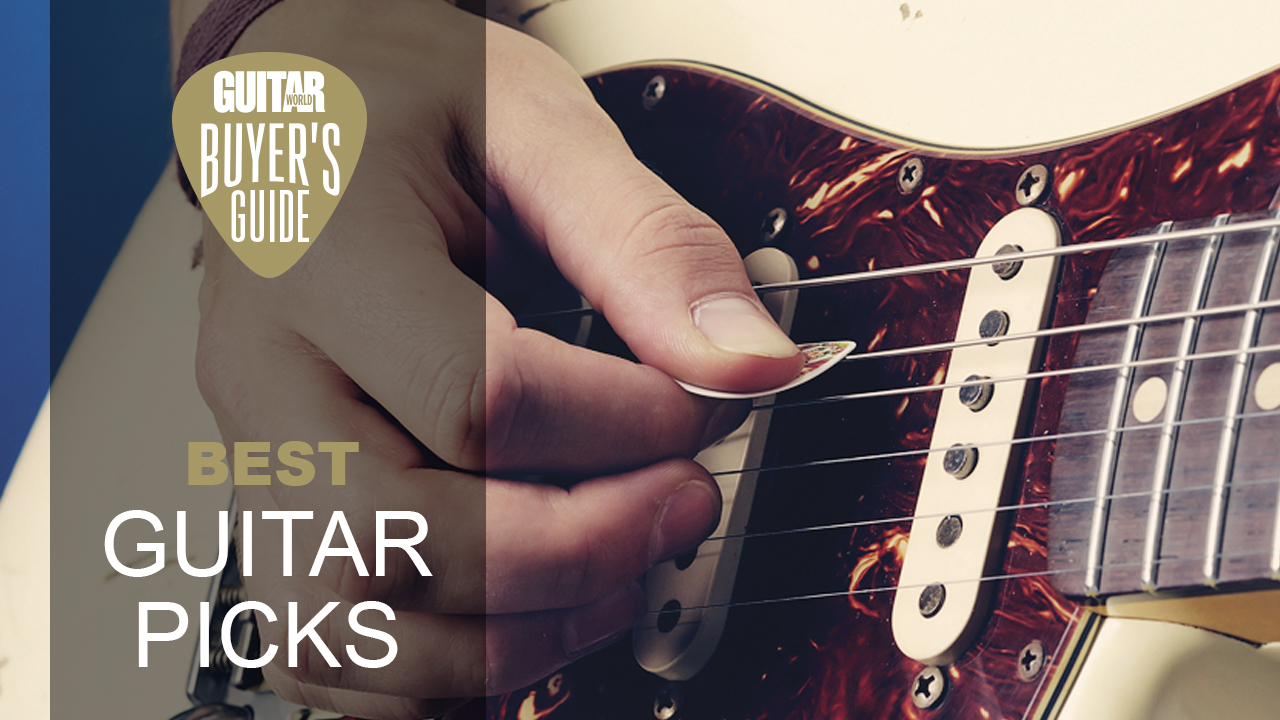
Guitarists tend to be creatures of habit when it comes to their guitar picks. Once they find one it's quite rare for them to move to something different, and if you've found yourself in that position, you might well be missing a trick. Changing to one of the best guitar picks can open up a whole new world of playing, affecting your technique and the very core of the way you interact with your guitar.
I've been playing for over twenty years now, and I've had first-hand experience with every single pick in this guide. I can conclusively say that there is no best guitar pick overall, only the best guitar pick for your particular needs. In particular, the thickness and shape of the guitar pick have a drastic effect on your playing, so I'd always recommend trying out a few different choices because you may well surprise yourself with what you end up gelling with.
Whether you're an absolute beginner, or you just want to try something different, you should start with the Dunlop Tortex Standard Pick Variety Pack. It features a wide variety of pick thicknesses that will help you find the right gauge for your particular playing style. We've also got a how-to-choose section further down the page that deep dives into the differences between pick thicknesses, materials, and shapes if you want to learn more before purchasing.
On the hunt for guitar gear savings this Black Friday? Shop our handpicked selection of the best Black Friday guitar deals.
Quick links
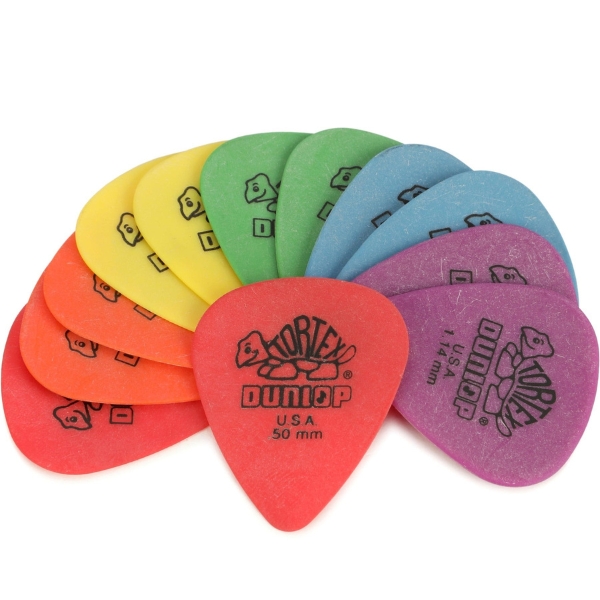
If you've just got your hands on your first guitar but are unsure about what style of pick to choose, this Dunlop variety pack is a great place to start. For your money, you'l get two of .50mm, .60mm, .73mm, .88mm, 1.0mm, and 1.14mm sizes, so you'll be able to test them all out to find out what you prefer when playing.
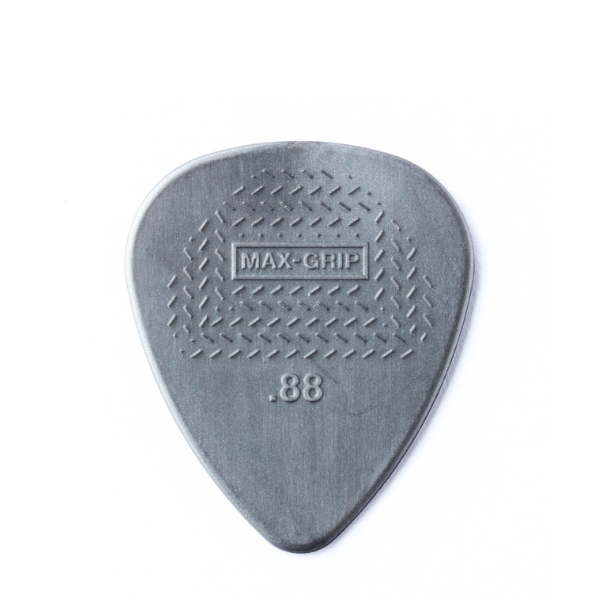
This is an ideal pick if you play electric guitar and are a slightly more experienced player. The extra grip on the plectrum is fantastic and there's a good choice of thicknesses to go between. Dunlop always produce excellent picks and the Nylon Max Grip is no exception.
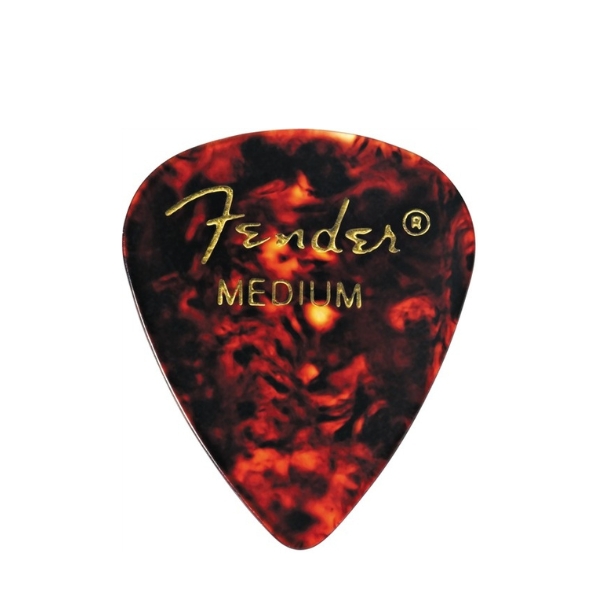
If your play style leans more towards acoustic than electric, then the Fender 351 should be your first port of call. It's celluloid design gives a nice mix of flex and rigidity making it the perfect plectrum for acoustic playing - and it's from a classic brand.
Best for beginners
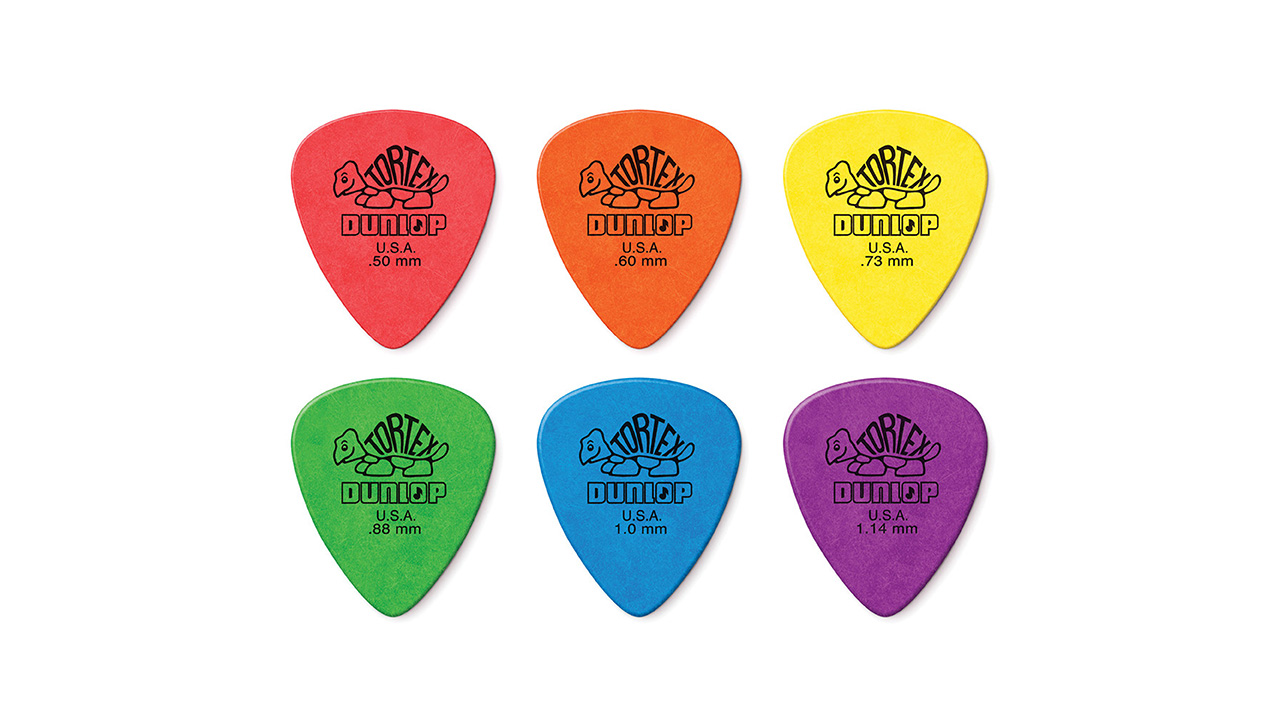
1. Dunlop Tortex Standard
Our expert review:
Specifications
Reasons to buy
Reasons to avoid
The first pick I used was a Dunlop .73mm because my guitar hero, Matt Bellamy from Muse, used one. As a beginner guitar player, you're still finding out what exactly it is you want from a pick, which is why I'd recommend every beginner purchase the Dunlop Tortex Standard variety pack.
It gives you two of .50mm, .60mm, .73mm, .88mm, 1.0mm, and 1.14mm sizes, which cover a lot of pick thicknesses in one pack. It means you can settle on your desired pick, and the color coding system makes them easy to recognize once you learn the different thicknesses.
Best electric
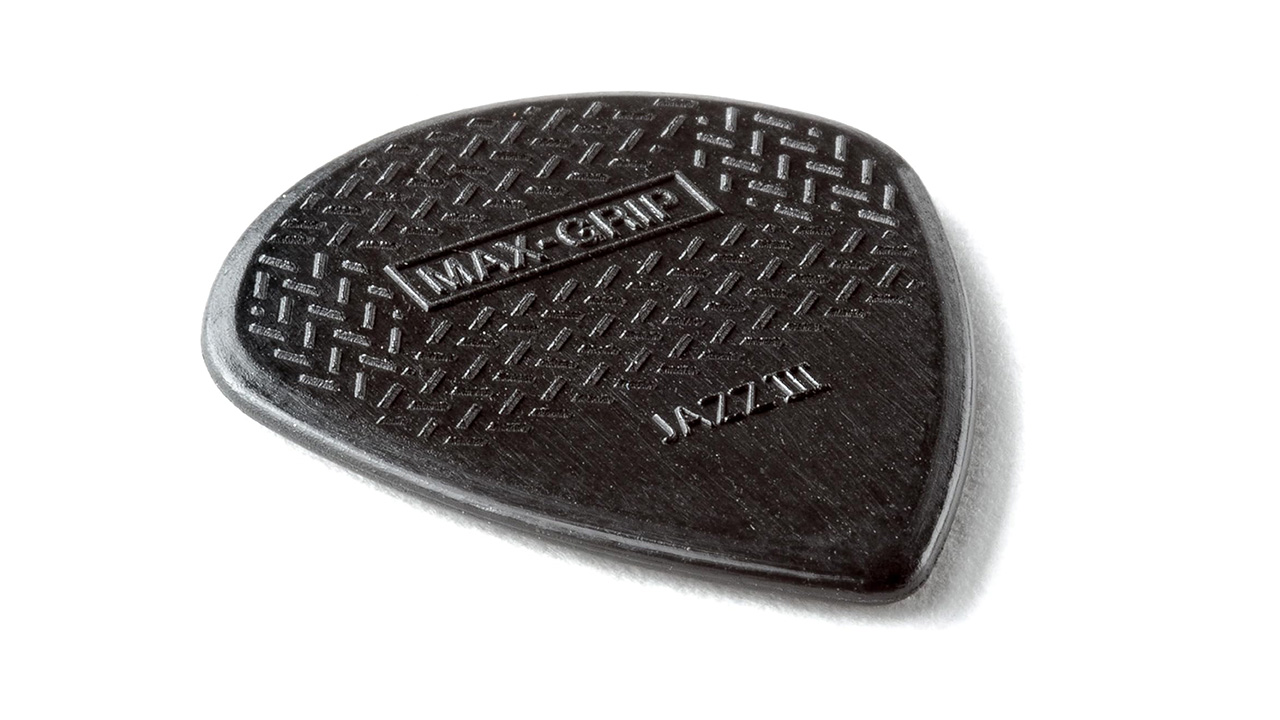
2. Dunlop Nylon Max Grip
Our expert review:
Specifications
Reasons to buy
Reasons to avoid
For electric guitar players, I've gone for the Dunlop Nylon Max Grip. It's not all that different from the Dunlop Standard, but that extra grip makes it a great option for guitarists who've advanced towards performing or rehearsing with bandmates.
It provides an outstanding grip with a specially engineered, coarse grid that ensures the likelihood of you dropping your pick shrinks significantly. My favorite is the .88mm, but there's a good selection of thicknesses available too, whether you prefer something with give or you like a thick pick.
Best acoustic
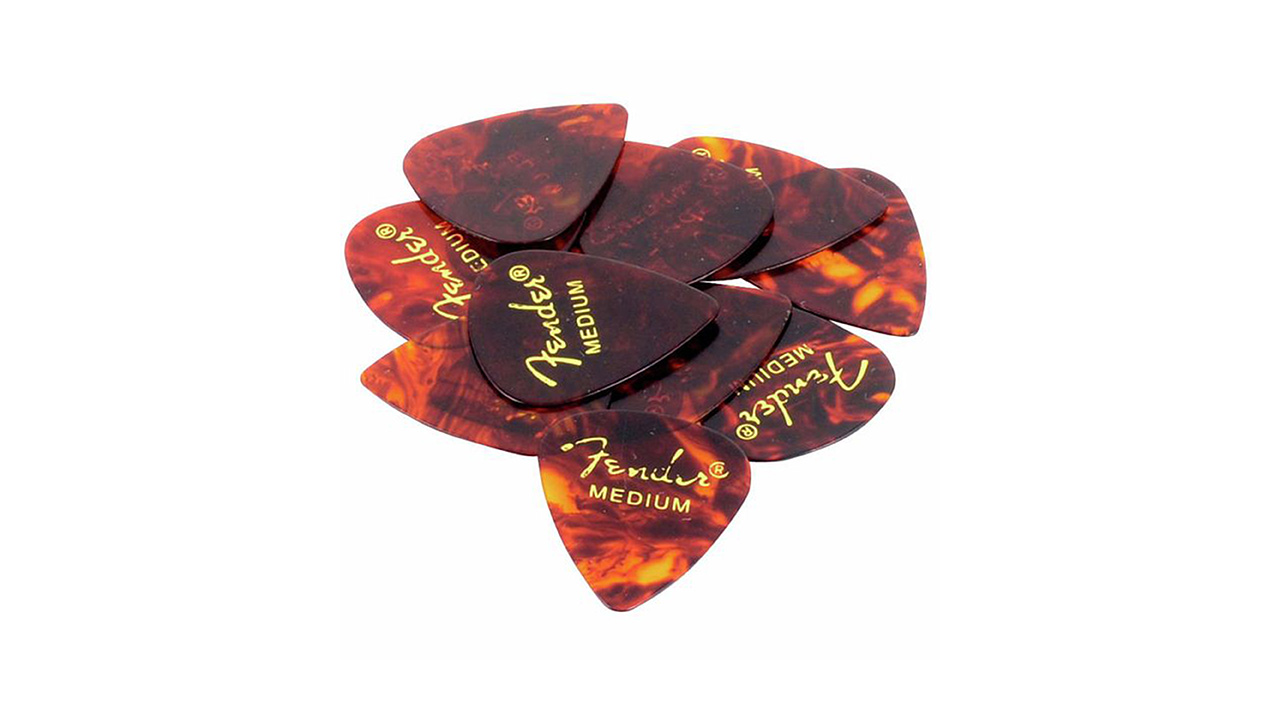
3. Fender 351 Shape
Our expert review:
Specifications
Reasons to buy
Reasons to avoid
The Fender 351 Shape Celluloid Classic is a guitar pick that's been around for a long time, and it's my pick of choice for acoustic guitars. The celluloid material delivers a great mix of rigidity and flex, making it great for pairing with the high tension of a steel string acoustic.
There's a huge array of color options available and Fender keeps it simple with thin, medium, heavy, and extra-heavy options. I personally prefer a medium pick, but there's also a variety pack available if you want to try all the options first.
Best for metal

4. Ernie Ball Everlast
Our expert review:
Specifications
Reasons to buy
Reasons to avoid
I switched to a baritone a couple of years ago for my heavy riffing endeavors and in doing so found my current pick just couldn't handle the thicker strings and lower tunings. Enter the Ernie Ball Everlast, which is perfect for those who want to chug.
The 1.14mm is my favorite, but there's a huge selection available. I really love that the pick shape is quite long, making it easier to play across the strings of extended-range guitars. I do appreciate this length might not suit all players when it comes to ultra-fast playing.
Best for shred
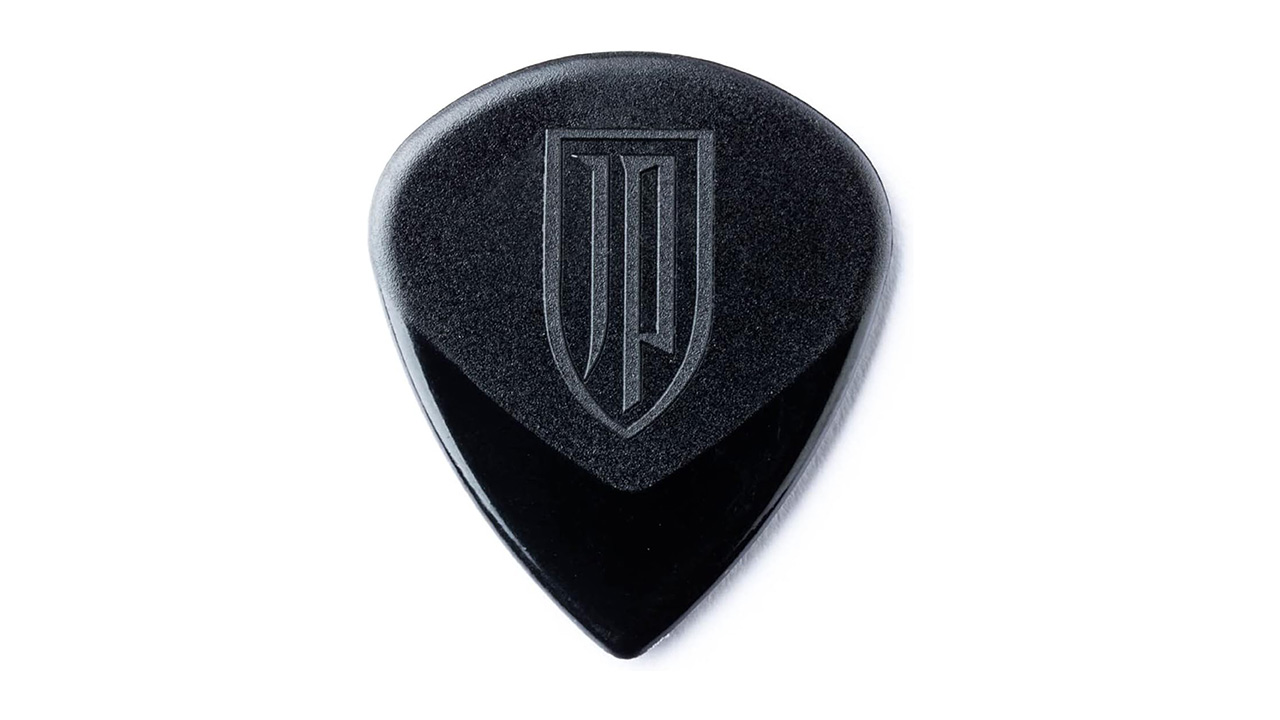
5. Dunlop John Petrucci Jazz III
Our expert review:
Specifications
Reasons to buy
Reasons to avoid
A friend of mine - who is also a John Petrucci superfan - introduced me to the Dunlop John Petrucci Jazz III, which in my opinion is ideal for players who want to shred. It's a little longer than the regular Jazz III which makes it a bit more versatile, although still slinky enough for arpeggios and string skipping licks.
I find the regular Jazz III a little too short for me, and I end up rubbing my 3rd knuckles on the strings when I play. With the slightly elongated length here you can avoid that, whilst still retaining plenty of fast-playing feel.
Best for bass

6. Dunlop Big Stubby
Our expert review:
Specifications
Reasons to buy
Reasons to avoid
Generally, if you're playing bass guitar you'll want a thicker pick (unless you're Fat Mike of NOFX) so I've gone for the Dunlop Big Stubby as the top pick for bass players. I first encountered this pick in a college rehearsal room where a bassist I was jamming with was using one.
I found them horrible on guitar, but once I switched to using one on bass I never looked back. It really lets you dig into the thicker bass strings when you need it, but the rounded tip makes alternate picking nice and smooth.
Best thumb pick
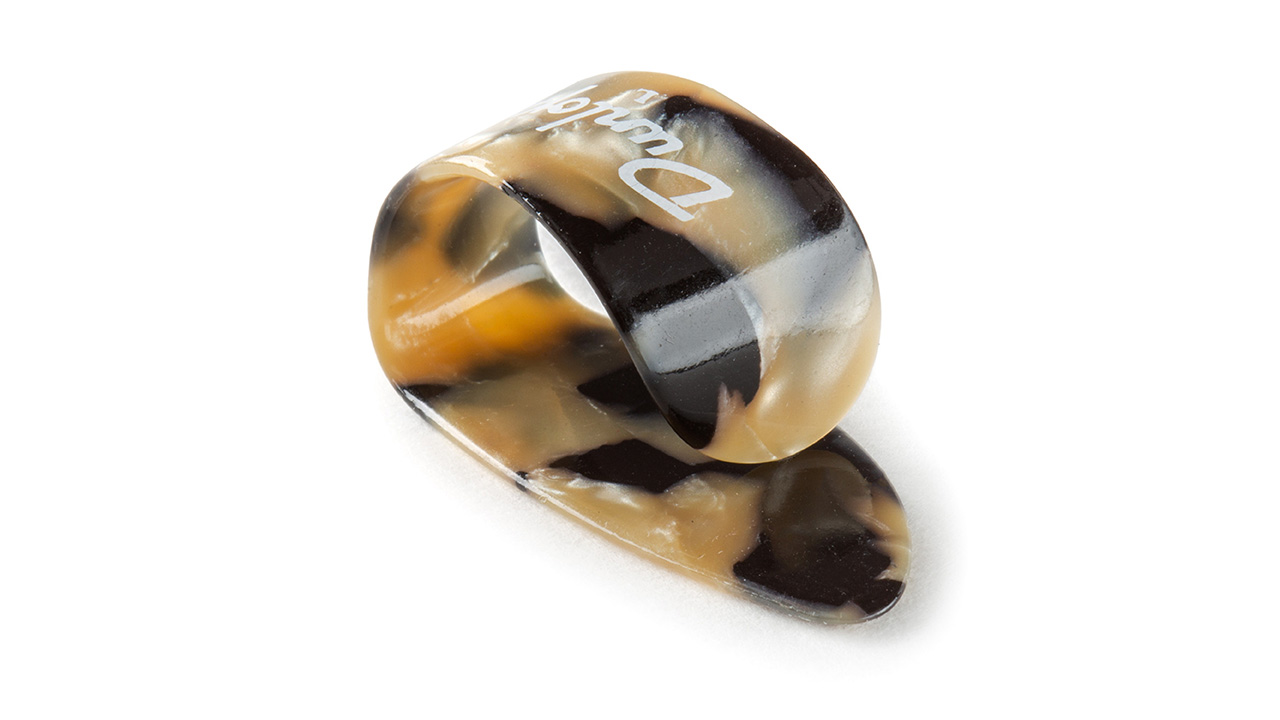
7. Dunlop Heavies 9216 Calico
Our expert review:
Specifications
Reasons to buy
Reasons to avoid
When I’m finger-picking on an acoustic guitar, I always reach for a thumb pick. Having the bass notes emphasized and sustained gives the perfect platform for the melody to truly thrive. After trying countless options over the years, the Dunlop 9216 Calico is by far my favorite.
As part of the Heavies range, the Calico has a bit more girth than a traditional Dunlop thumb pick. This extra thickness gives you added attack, which really helps when trying to project while finger-picking. The tip has also been extended on the Calico, and I’ve found that it offers greater precision and accuracy when picking.
Available in either medium or large, the Calico fits quite snugly, so if you have larger fingers, it might not be the best option for you. Other than that, it’s the best option out there for finger pickers.
How to choose the best guitar picks for you
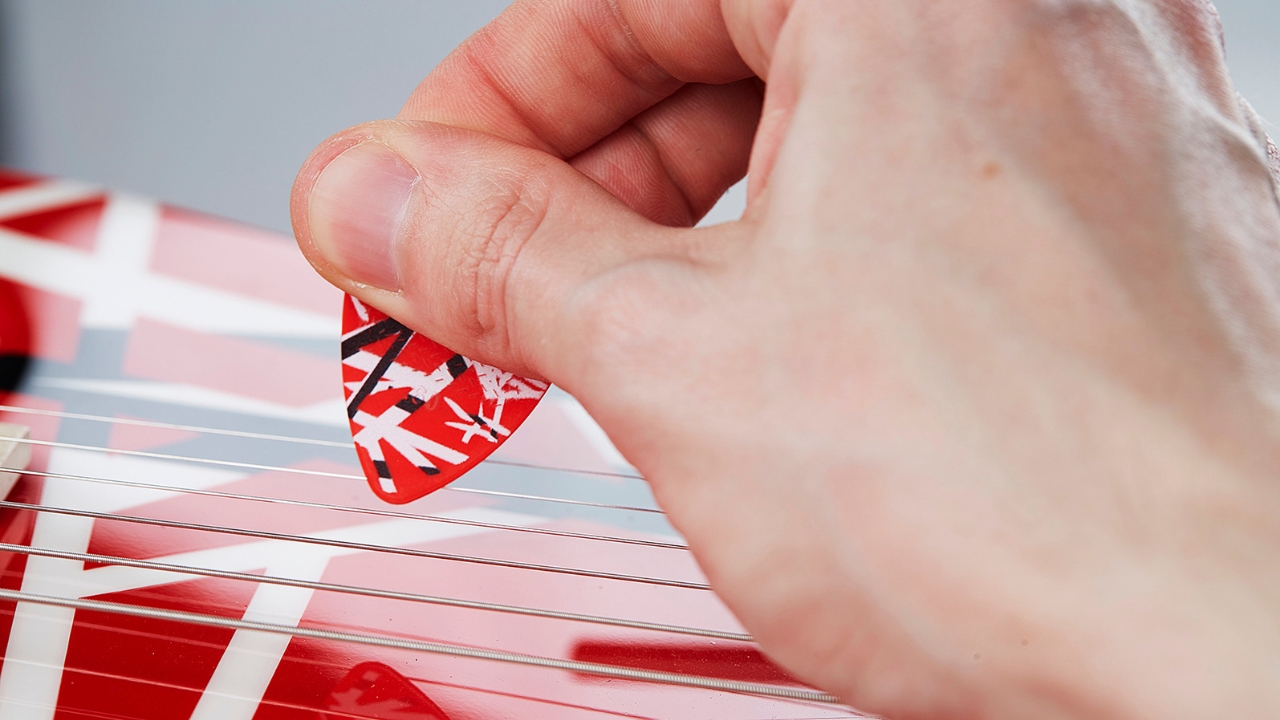
Choosing a guitar pick that suits your playing style is every bit as personal as the guitar you play, the pedals on your pedalboard, and the amp your tone comes out of. A different pick can completely change how you approach playing, and your preferences will likely evolve as you do.
I've been playing for more than 20 years and have tried (and lost) more picks than I care to remember. Below you'll find some advice on choosing your guitar pick, as well as info on materials and thicknesses.
1. Test them out
If you're new to guitar, or just fancy trying something different, do yourself a favor and buy a variety pack. Most pick brands offer one, and it’s an easy, low-cost way to test a bunch of picks to see which you like best. You might prefer one for electric and another for acoustic, or find one pick great for strumming while another works better for lead. The only way to know for sure is to test them yourself and find what fits your playing style.
2. Thickness
Thickness plays a huge role in how a pick feels. For my playing style, thin picks don’t work, but I know plenty of players who can’t get along with thick ones. Thickness affects how much the pick flexes while alternate picking and how much resistance you feel when strumming. Picks can range from flexible 0.38mm to rock-solid 3mm, so try a variety to see what feels best to you.
3. Material
Material does make a small difference to tone, though you’ll notice it more on acoustic guitars than electrics, which go through plenty of tonal changes before reaching the amp. It also changes the feel and the way the pick hits the strings. No material is objectively better or worse; they just each have a slightly different response.
4. Shape
Pick shape affects feel just as much as thickness. While most are teardrop-shaped, triangular and other alternative shapes, like Dunlop’s Fin picks, provide a very different experience. Tips also vary, from rounded to sharp, and the overall size of the pick changes how it feels in your hand. Some players prefer a short, sharp pick for fast playing, while others like a longer, rounded one for smoother strumming. There’s no right or wrong here, just the pick that lets you play comfortably and express yourself best.
FAQs
Do my choice of guitar pick really matter?
Yes they absolutely do. A guitar pick can drastically change the way you approach your guitar playing, and are as personal as any other bit of gear you'll use.
Are thicker guitar picks better?
The thickness of your pick determines how it will react in your hand, and also plays a part in how your instrument will sound too. Generally speaking, a thinner pick will have a brighter sound with a less precise attack, making them great for strummed chords on your acoustic guitar and less so for fast picking.
Thicker picks tend to be better for players wanting to build up speed, with their stiffness meaning less work for your picking hand when playing licks or riffs. This stiffness can make them feel cumbersome when strumming chords, as you’ll really feel each of your guitar strings when you strum. Tonally they offer a fuller, warmer tone thanks to the density of the material, and often come with beveled edges to minimize pick-to-string contact.
Your perfect match will be something that doesn’t make your picking hand work too hard, forcing you to grip your pick tighter. Ideally, you’ll want your picking hand to be as relaxed as possible, giving you a better picking technique and preventing you from tiring out too soon. Whether this is a thicker or thinner pick is all in your personal playing style.
Can you use guitar picks for bass?
Yes you can. There's no real specific bass guitar picks out there, so you can use whatever feels comfortable to you. Some people prefer a thicker pick for bass, but there are plenty of players who use thinner picks when playing the bass guitar.
What is the best material for guitar picks?
Picks have been made from all sorts of materials in the past, including bone, steel, tortoiseshell, wood, and abalone shell. You can also get steel picks but the majority nowadays are made from synthetics like celluloid, acrylic, Delrin, Ultex, or nylon.
The material certainly affects the way the pick feels in your hand, and has a small impact on the sound, but we wouldn’t fret too much about the tonal impact of the material itself.
Do guitar picks break?
We’ve yet to come across a guitar pick that hasn’t worn out eventually, and it's definitely possible to break them, although this is pretty rare. The picks I've broken in the past tend to be those cheaper, personalized ones you get off Amazon.
You put your picks through some pretty tough conditions when strumming hard or chugging riffs, and the repetitive contact of any material on steel strings eventually wears through, no matter how tough it claims to be.
Modern materials tend to be a lot more durable, with Delrin, Ultex, and Nylon offering an excellent lifespan, even if you’re gigging every night. Celluloid on the other hand does its utmost to imitate tortoiseshell, so will wear out relatively quickly, and quicker still if you play an aggressive style of music.
Should beginners use guitar picks?
Yes you should. Beginners should learn how to use a pick, and how to play fingerstyle if they want to get the most out of their instrument. There's absolutely no harm in starting with a guitar pick if you want to go easier on your fingers when you're fast starting.
What guitar pick thickness should beginners use?
There isn’t necessarily a best pick thickness for beginners, as your preferred gauge depends on your playing style and comfort. A safe starting point is somewhere in the middle, around 0.60mm to 0.88mm. These medium-thickness picks offer a balance between flexibility and control, giving new players room to explore. From there, you can experiment with thinner or thicker picks to see what suits you best.
Does a guitar pick affect your tone?
This is a question that guitarists have been asking for years, and you’ll often get a different answer from each one you ask. My take is that a guitar pick can affect your tone, but the difference is often minimal and subtle to most ears. You’ll likely notice the biggest tonal change when comparing a plectrum to fingerpicking. A pick gives your playing more attack and brightness, while fingerpicking produces a softer sound with less bite.
The tonal difference between plectrum materials is usually quite small, and unless you have incredibly sharp hearing, most players won’t notice much change from one material to another.
What’s the best guitar pick for an acoustic guitar?
If you’re mainly strumming chords on an acoustic guitar, a slightly thinner plectrum will likely feel more natural. Flexible materials like nylon reduce resistance when strumming, helping you glide smoothly over the strings. A thicker pick, made from materials like Delrin, gives a firmer feel and more projection, though it can sound a bit harsh if your technique is heavy-handed. Thicker picks are ideal for flatpicking, where brightness, control, and projection are essential to getting a strong, articulate sound.
Glossary
Alternate picking: A picking technique where you alternate between up and down strokes, usually at speed or in quick succession.
Attack: The sound of the pick striking the string and how sharp or pronounced that sound is.
Beveled edge: A type of plectrum with a sloped edge designed to create smoother contact between the pick and the string.
Celluloid: A plastic material commonly used for guitar picks, originally developed as a substitute for tortoiseshell.
Delrin: A hard plastic material used for guitar picks. Delrin picks are durable, lightweight, and produce a bright tone.
Flex: Describes how much flexibility a plectrum has. Softer materials like nylon have more flex than harder ones, such as Delrin.
Gauge: Refers to the thickness of a guitar plectrum, typically measured in millimeters (mm).
Grip: Some plectrums have extra texture or coating applied to prevent slipping while playing.
Jazz III: A smaller Dunlop plectrum with a pointed tip, popular among players who favor precision and fast alternate picking.
Nylon: A flexible plastic material used to make plectrums. Nylon picks are softer and often provide a smoother feel and response.
Plectrum: Simply another name for a guitar pick.
Rounded tip: A pick tip with a smooth, curved shape that glides more easily across the strings and offers less resistance.
How we test
The team here at Guitar World consists of players with decades of playing experience, so if there's a pick you've heard about, chances are one of us has tried them. We use this real work experience to inform the picks we choose for our guides, and I've personally used every single pick mentioned here at one point or another over the years.
As guitar picks are so personal, you can't really say that one pick is the best overall, so we opted to sort this guide via use case to aid guitarists in choosing the right pick for them. To make the cut, our chosen picks must put up with repeated use without wearing down too quickly, and be grippy enough to stay in the hand during practice, rehearsal, and at live shows.
We'll also use the picks with a variety of playing styles to determine what they're best for, whether that's sweep picking, strumming on an acoustic, or alternate picking on a bass guitar. Putting them through rigorous testing ensures that they'll suit a variety of different players, so you can rely on our recommendations.
Read more about our rating system, how we choose the gear we feature, and exactly how we test each product.
Meet the experts
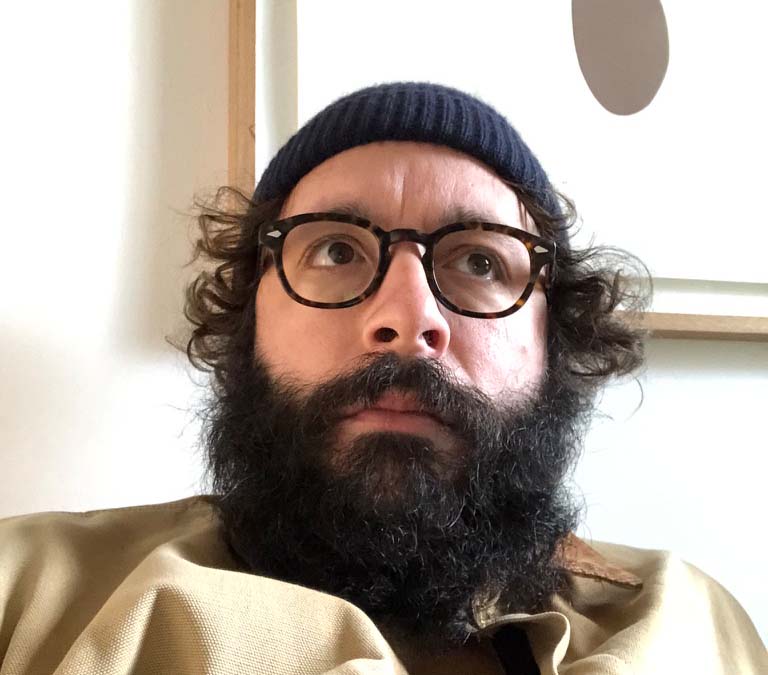
Jonathan Horsley has been writing about guitars since 2005, playing them since 1990, and regularly contributes to publications including Guitar World, MusicRadar and Total Guitar. He uses Jazz III nylon picks, 10s during the week, 9s at the weekend, and shamefully still struggles with rhythm figure one of Van Halen’s Panama.

Matt has been recording bands since the mid-noughties, cutting his teeth with an SM58 clone and a copy of Cubase on Windows XP. Since then, he's used countless microphones to record music for bands across the UK, covering everything from djent to jazz. As a MusicRadar writer, Matt has reviewed over 50 different products, including guitars, amps, pedals, mics, and studio monitors.

Ross has been a music lover and guitar player since the age of 8. He has spent the five years since graduating from university working in music retail, selling guitars, amps and more. Ross is particularly interested in electric guitars, pedals and amplifiers and his current rig includes a trusty 2009 American Standard Stratocaster and Vox AC30S1 with a few Walrus Audio and Way Huge pedals in between.
Latest updates
30/10/25: The guide has been reworked from the ground up and now includes a total of seven product recommendations from the countless more we've tested for this guide. The How To Choose section has been rewritten and there are now more FAQs to help you with your decision-making. A glossary has also been added to explain key terms.
Read more:
You can trust Guitar World
- Secure your axe with the best guitar straps around
- Upgrade your lead with our guide to the best guitar cables
- Take a look at some of the best gifts for guitar players
- Get started with beginner guitar gear essentials and accessories
All the latest guitar news, interviews, lessons, reviews, deals and more, direct to your inbox!
Jonathan Horsley has been writing about guitars since 2005, playing them since 1990, and regularly contributes to publications including Guitar World, MusicRadar and Total Guitar. He uses Jazz III nylon picks, 10s during the week, 9s at the weekend, and shamefully still struggles with rhythm figure one of Van Halen’s Panama.
- Matt McCrackenJunior Deals Writer
- Ross Holder
